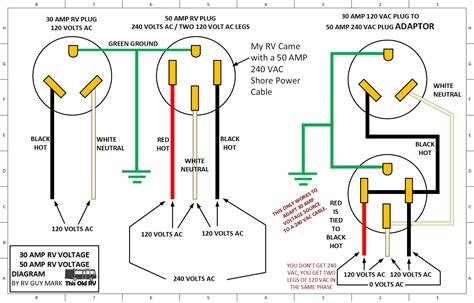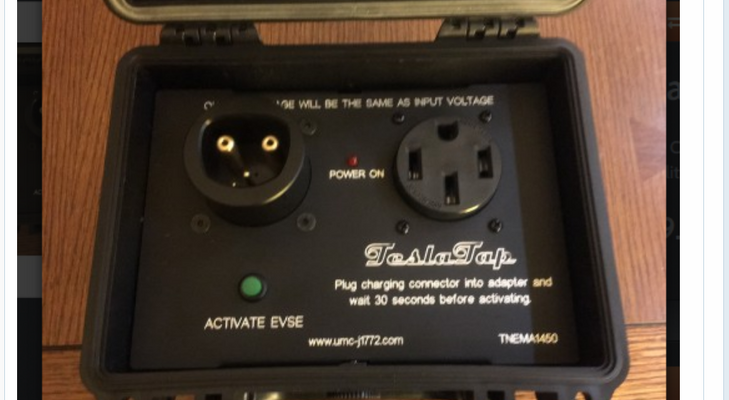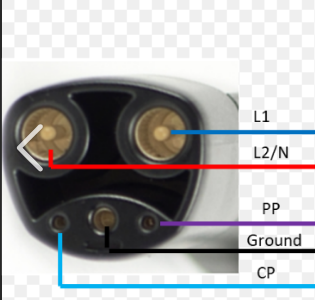Kirk
Well-known member
I am suspicious that you have power to only 1 leg of the 120V system. Nearly all 50A RVs have 2 circuit breakers for outlets, one on each leg (L1 & L2) of the supply. The best 50/30 adapters will tie both legs together and share the supply but there are adapters out there which only power 1 side so check the adapter with your ohm meter first. Sme are like this image.When we plugged in for first time at our house only a few outlets had power and no appliances.
You will need one that has L1 and L2 connected together like this.
I suspect that you may have the first version.



